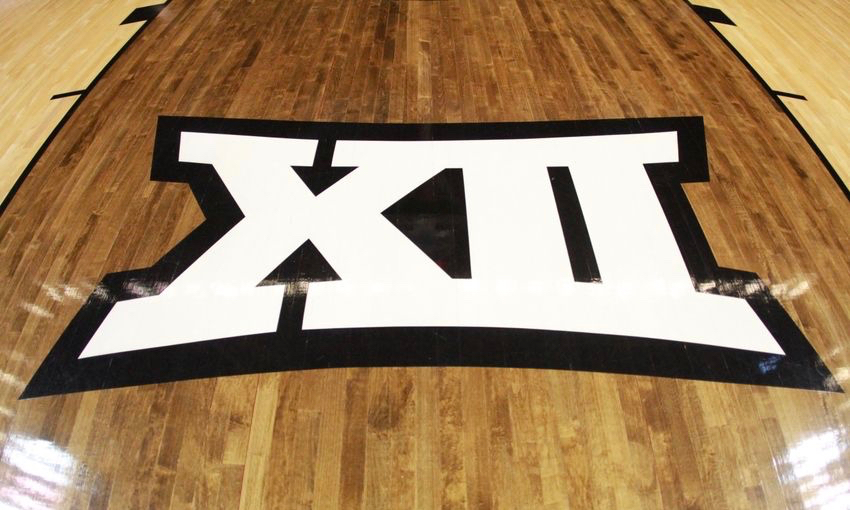Always a bridesmaid, never a bride. That’s essentially the way that many critics have viewed the Big 12 conference over the past two decades. The conference is known more so for its depth than being dominated by one or two juggernauts. During its 20 years of existence, the Big 12 has produced just one national champion (Kansas in 2008) and three Wooden Award winners (T.J. Ford, Kevin Durant, and Blake Griffin). Besides Kansas, they really don’t have any traditional college basketball powerhouses that consistently find themselves in contention for a national championship. Occasionally, a dark horse will rise up and make a deep tournament run in March like Oklahoma State did in 2003 or Missouri Baylor did in 2012, but most years the Big 12 hasn’t truly been able to sit at the big kids table with historically dominant conferences like the Big 10, Big East, and ACC.
The current Big 12 season has thus far shattered all preconceived notions that the Big 12 can’t hang with the elite teams in the country. The current AP number one team, Villanova, got absolutely steamrolled by Oklahoma just two months ago. As it currently stands, 60% of the conference is ranked in the top 25 and three Big 12 teams, Oklahoma, Kansas, and West Virginia, are currently ranked in the top ten.
The success across the board in the Big 12 this season has many people speculating about whether or not this is the best that the Big 12 has ever been. A case can be made for a number of Big 12 seasons, so the task of narrowing it down to the top five was not an easy one. Keep in mind that the conference was not officially established until 1996, so the 1988 season that ended with the unforgettable Kansas versus Oklahoma national championship game isn’t eligible for this discussion. A number of factors went into these rankings including depth, individual talent, and postseason success. After some extensive research, here are your rankings of the top five seasons in Big 12 history.
5. 2008-09
Tournament teams: 6
Great teams (3): Kansas, Oklahoma, Missouri
Good teams (3): Texas A&M, Oklahoma State, Texas
Bad Teams (3): Iowa State, Texas Tech, Colorado
Player of the Year: Blake Griffin (Oklahoma)
Two words: Blake Griffin. Griffin averaged 23 points and 15 rebounds on his way to winning the Wooden Award and Big 12 player of the year. The Sooners made the Elite Eight, as did Missouri (RIP), while defending national champion Kansas went about their usual business winning the conference championship on their way to the Sweet Sixteen. The reason why this season isn’t ranked higher on this list is because there were several teams at the bottom of the conference in 2008-09 that were absolutely horrendous. The bottom three teams (Colorado, Texas Tech, and Iowa State) won a grand total of just eight conference games. Texas Tech and Colorado had a combined road record of 0-22 on the road for the year. Yikes.
4. 2001-02
Tournament teams: 6
Great teams (2): Oklahoma, Kansas
Good teams (4): Texas Tech, Texas, Oklahoma State, Missouri
Bad teams (5): Kansas State, Colorado, Baylor, Iowa State, Texas A&M
Player of the Year: Drew Gooden (Kansas)
The 2001-02 season stands out because it is one of only two seasons in Big 12 history where the conference has had two Final Four teams. While both Oklahoma and Kansas lost in the semifinals, it was still a banner year for the conference nonetheless. Kansas’ big three of Kirk Heinrich, Nick Collison, and Drew Gooden steamrolled their way through conference play on their way to a 16-0 conference record. That Jayhawk team remains the only team in Big 12 history to run the table through conference play. Part of the reason why Kansas was able to make the run they did was due to the extremely top-heavy layout of the conference. With the exception of Oklahoma and Texas, no other team presented a real threat to beat top-level competition that season. The 2001-02 Big 12 is often overshadowed by the unforgettable 2002-03 season that followed, but we’ll get to that later.
3. 2011-12
Tournament teams: 6
Great teams (3): Kansas, Missouri, Baylor
Good teams (3): Iowa State, Kansas State, Texas
Bad teams (3): Oklahoma, Texas A&M, Texas Tech
Player of the Year: Thomas Robinson (Kansas)
Missouri’s postseason run was about as impressive as their rap game, but boy were they entertaining in their final year in the Big 12. Who can forget the legendary final chapter in the Border War at Allen Fieldhouse? I know I’ve personally met at least 75,000 Jayhawk fans that claim to have been in attendance that night. The Jayhawks epic second half comeback kept their streak of consecutive conference championships alive and sent the Tigers off to the SEC dragging their tails between their legs. This season stands out not only as Missouri’s Big 12 swan song, but also for the return to relevancy for two of the conferences historical powers. Oklahoma and Iowa State both came out of the woodwork to make a name for themselves during the 2011-12 campaign. The season was capped off by Baylor’s second run to the Elite Eight in three years, a feat that is sure to be remembered forever in the annals of college basketball history. Also, Kansas made it to the all the way to the national championship game before running into an unfortunate set of circumstances better known as Anthony Davis.
2. 2002-2003
Tournament teams: 6
Great teams (3): Kansas, Texas, Oklahoma
Good teams (3): Oklahoma State, Colorado, Missouri
Bad teams (3): Kansas State, Nebraska, Baylor
Player of the Year: Nick Collison (Kansas)
Kirk Heinrich, Nick Collison, Wayne Simien, Keith Langford, and Aaron Miles. Yes, that was an actual college basketball lineup. Yes it was absolutely horrifying for the rest of the country. Two Big 12 teams made the Final Four for the second consecutive year. Wooden Award winner, T.J. Ford (how you win the Wooden Award and somehow aren’t even Player of the Year in your own conference is puzzling to me, but I digress), led Texas to its first Final Four appearance in 56 years, while the Roy Williams led Jayhawks came up just short against Carmelo Anthony and Syracuse in the national championship. Sure, there were some mediocre teams at the bottom of the conference, but the top tier of the 2002-03 Big 12 was simply unbelievable. The collection of team and individual success (3 All-Americans) packed into one season is something that is seemingly unrepeatable. One of the major contributors to this banner season for the Big 12 was the insane amount of upperclassmen making substantial contributions to their teams. Now long gone are the days when players stayed in college for more than six months and March Madness wasn’t focused around a bunch of 18-year-olds who are only using the tournament to boost their draft stock. Or so we thought….
1. 2015-16
Tournament teams (projected): 6
Great teams (3): Oklahoma, Kansas, West Virginia
Good teams (3): Baylor, Iowa State, Texas
Bad teams (1): TCU
Player of the year (projected): Buddy Hield (Oklahoma)
The only thing that runs deeper than Bob Huggins commitment to sweat suits is the incredible amount of talent that the Big 12 has been blessed with this season. It seems like just about anybody can beat anybody else on a given night this year (except TCU, they’re still the same old doormat we all know and… well, we all know). Monday night’s barnburner in Norman between the Sooners and the Longhorns was just the most recent example that there are no nights off in Big 12 conference play. Nine of the ten teams in the conference are dangerous on their home court, and there is almost no such thing as an upset in the Big 12 this season. Buddy Hield looks to have the Wooden Award all but locked up, and his Sooners are one of several Big 12 teams poised to make a deep tournament run in March. While the 2014-15 Big 12 obviously does not have the postseason results to measure against every other year, I have this year at the top of my list simply because there are no guaranteed wins that teams can look forward to during conference play. The smaller number of teams in the conference compared to years past means that every team has to play a home-and-home with every other team. There is no way to hide from the top teams like you can in other conferences. I am thoroughly looking forward to two months from now watching One Shining Moment (still the worst tradition in all of college sports) while Buddy Hield/Perry Ellis/Jaysean Paige/Ish Wainwright cut down the nets in Houston.









